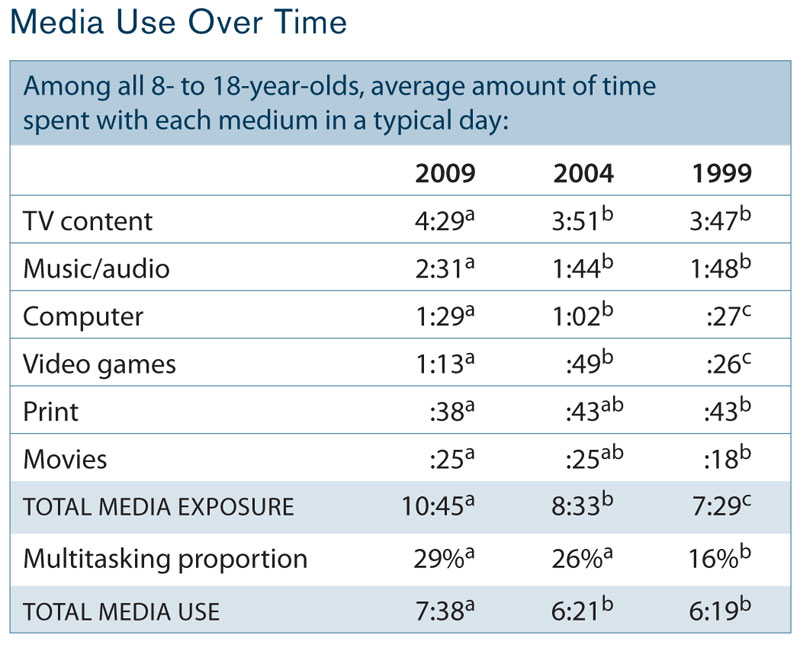Media saturation and its impact on teens is an important topic. Yet many youth leaders and parents have thrown in the towel. How can we help teens avoid negative impacts of media saturation? Read insights from a ministry veteran.
Media saturation is pervasive. Yesterday, the first sound I heard was music oozing from my girls’ phones. Moments later, as 15-year-old Alyssa came downstairs to breakfast, she was texting a friend about homework. Meanwhile, 13-year-old Ashley quickly jumped online to check the weather. Minutes later, Ashley plugged her phone into the car’s system so we could hear her music on the way to school.
I’ve read all the reports about media saturation and its impact on teens. Our family doesn’t leave the TV on. My kids don’t have internet connections in their room. And I’m very proactive about monitoring our home’s level of media saturation. But the fact remains. It was only 7:32 a.m.… and we were already soaked.
Media Saturation and Its Impact on Teens
Nielson, Kaiser Foundation, Pew Internet, The American Academy of Pediatrics… They’re all researching media saturation and its impact on teens. Their conclusions all agree. But newspapers, magazines and TV reports all filter the data. After all, the news has to be interesting…even shocking, right?
Here’s how it usually works. Experts release a study followed by a press release. Journalists read the studies and write their opinions, quoting numbers that leap off the page. The common folk begin reading articles and listening to findings as they get ready for work. On Sunday, pastor quotes the most shocking of those numbers. Then at lunch, a group at the local diner says, “Did you hear that 98% of teenage girls are prostitutes and drink a gallon of alcohol per hour?”
So don’t believe the gossip. Check your sources to determine the validity of what you’re reading. Then look at the research with your own eyes.
Data About Media Saturation
Pew Internets’ Amanda Lenhart released a helpful presentation about the Impact of Technology on the Lives of American Teens. She cuts through the hype and gets straight to the facts. This is a great summary about plugged-in teenagers:
-
- 93% of teenagers 12-17 are online—the largest percentage of any age group.
-
- Only 8% of families with teens have no computer, and only 4% of homes with computers don’t have internet access.
-
- 80% of teens 12-17 own a game console.
-
- 75% of all teens have a cell phone.
-
- A typical teen sends about 50 texts per day.
-
- Most teen cell phone users make 1-5 calls per day.
-
- 31% of teens who take their phones to school send texts every day during class.
-
- 73% of teens are on social media sites.
Plus, add in the time kids spend in front of the TV, the computer, or listening to music. Several good sources provide data about media saturation and its impact on teens.
The most thorough is a report from Kaiser. This comparison chart reveals how many hours per day students absorb entertainment media:
Multitasking Media
Kids soak in 10 hours and 45 minutes per day of media in a mere 7 hours and 38 minutes. (This requires multitasking. In other words, they listen to Spotify while browsing the web, while the TV is on in the background.) This is an increase of 2+ hours of daily entertainment media saturation.
At my workshops, parents are always surprised that kids spend more time watching TV than browsing the internet. But the numbers don’t lie: TV still rules the media war.


